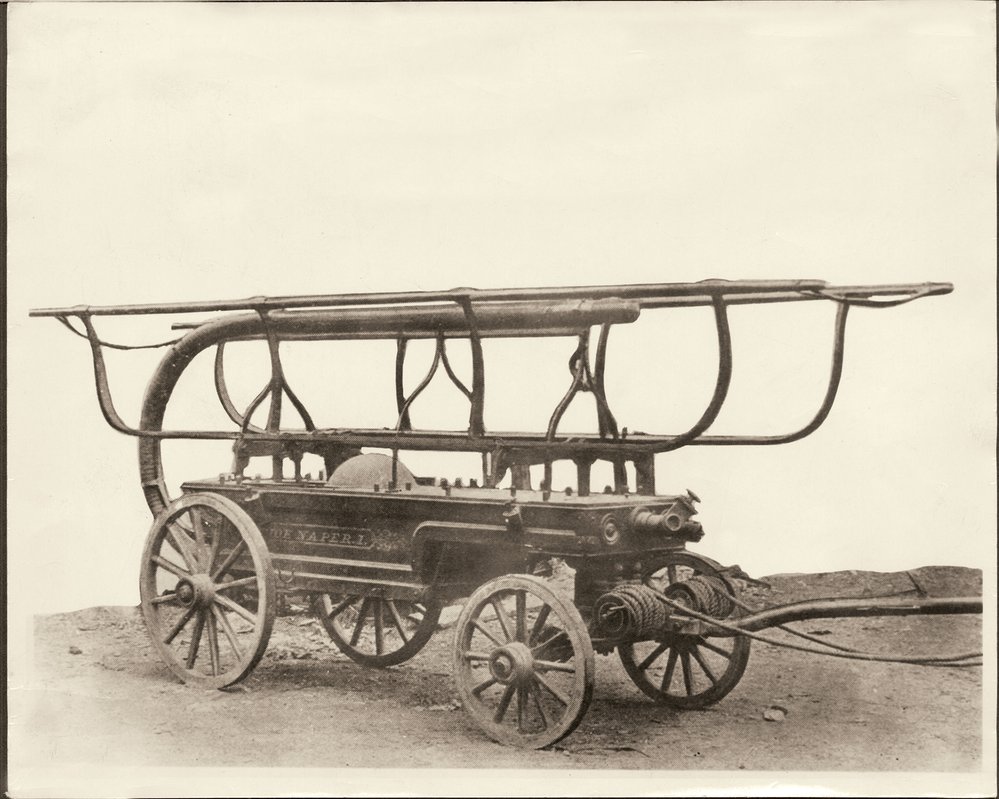
In October 1871, a massive fire broke out in the city of Chicago, setting the city ablaze. The glow of the flames could be seen even from Naperville, 28 miles away. A week after the fire, a member of the Chicago Board of Public Works wrote to his brother: “Our beautiful city is in ruins. The greatest calamity that ever befell a city is upon us. Boastful Chicago lies prostrate and with outstretched arms in begging of her sister cities for relief.” Naperville residents eagerly responded to the call for aid. People went door to door soliciting food for the relief effort. The fire also sent a jarring message to Naperville: the town was fast outgrowing its bucket brigade. Even so, it took three years—and a large fire—before a modern fire pumper, named the “Little Joe Naper,” was purchased for $1,752.00. A Hook and Ladder Company, composed of a fire marshal and volunteers, was formed to operate the pumper. When the fire bell rang, the volunteers rushed to the firehouse, which was often just a shed or garage large enough to store the pumper. There, they harnessed the ropes on the side of the pumper to their shoulders and hauled it to the fire. The intake hose was hooked up to any nearby water source, perhaps a cistern, stream, or well. The outtake hose, pressurized from the hand pumping of the firemen, blasted out 250 gallons of water a minute—smothering flames with a force that no human chain of buckets passed hand-to-hand could match.